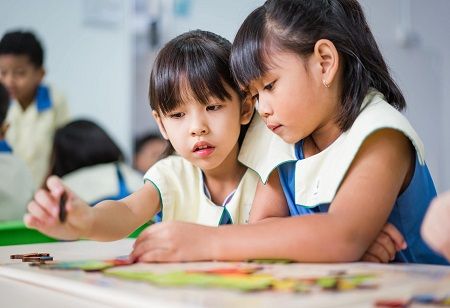- China rolls out new guidelines to implement free preschool education and boost child care affordability
- Plan includes teacher salary hikes, facility upgrades, and 660,000 new subsidized nursery spots by 2025
- Move aims to reduce child-rearing costs, promote births, and bridge rural-urban preschool education gaps
China is making strides in launching free preschool education as part of wider moves to reduce escalating child care expenses for new families amid growing demographic woes for the nation. The step comes after China pledged during its annual legislative session earlier this year to extend the countrywide rollout of free preschool education gradually.
In its newest guideline, which came out, the central government has called upon local authorities to formulate detailed plan of action quickly, and to release subsidies needed. It also called for strengthening preschool facilities, increasing kindergarten teachers' salary and welfare, and enhancing children's physical and mental care.
The possibility of free kindergarten has attracted appreciation from parents. The policy has been called a timely 'gift' by Ms Tan, a Beijing working mother whose 3-year-old daughter is to enter kindergarten this autumn. If implemented in full, she added, it would save her family a minimum of 9,000 yuan ($1,260) annually.
Kindergarten fees in China are extremely diverse by location and nature. In Beijing, governmental preschools generally cost less than 10,000 yuan annually, although competition is intense. Private kindergartens charge from several hundred to a few thousand US dollars per month in tuition.
China now offers nine years of compulsory education, including primary and middle school. The system, established in 1986, provides basic education for all school-age children. The efforts to universalize preschool education are viewed as a significant move to reach younger children as well.
"The policy would lower the cost of raising children and education further, and could push more families to have children", said Song Jian, deputy director of the Population Development Studies Center at Renmin University of China.
Also Read: Vietnam Plans Comprehensive Reform of Preschool Education
In addition to alleviating the cost burden on families, experts in education said the policy would help level out inequality in early childhood education between city and countryside, and among children with different socioeconomic backgrounds.
"It provides each child with a fairer beginning in life, and a firmer foundation on which to build future academic and personal progression", wrote Gao Bingcheng, associate researcher at China National Academy of Educational Sciences.
China's Ministry of Education released the most recent statistics in 2024: 253,000 kindergartens across the country had a total enrollment of 35.8 million children. Although kindergarten usually starts at the age of 3 in China, government officials are now also focusing on toddlers and infants who have long been nurtured at home.
As a way of further aiding families, the government is stepping up nursery care services for children under the age of 3, with the aim of easing working parents' pressures and enhancing early childhood development. As per guidelines made public in early July with an emphasis on increasing affordable child care, China aims to provide 4.5 child care spots per 1,000 residents by the end of 2025 and introduce 660,000 new subsidized spots.
For families like Tan's, the presence of affordable day care for preschoolers under age 3 is a deciding factor in having a second child. "It's a determining factor in whether or not I have a second child", she said. With more government funding, more subsidized nursery places and programs are available, providing families like Tan's with increased access and affordability.

